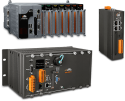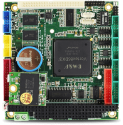
A new trend
The gradual advances in development of modern nanotechnology have led to a significant increase in System on Chip (SoC) performance. Combined with the ever growing demand for video storage solutions and applications for their playback, the resulting increased capabilities are exerting a strong influence on the Network Video Recorder (NVR) and Video Surveillance market. For a long time, the resolution of local displays, which in most cases was limited to a display in 2M 1080p Full HD with 30 frames per second (FPS), received insufficient attention. It is only since the increasing prevalence of displays with a high clock frequency, which enable a detailed display with 4K on a large diagonal, that users are paying more and more attention to performance in image rendering and optimal compatibility and support when used as a display for NVR systems. With high-resolution monitors becoming more common due to their high availability and significantly lower cost, users are also becoming more interested in NVRs that output and record in 4K to increase the efficiency of video surveillance.

The challenge
Many of SoC NVRs in use today support only four to eight channels for 2-megapixel cameras with 1080p Full HD resolution and 30 FPS frame rates.
Users connecting a higher number of cameras or using a combination of different variants such as 2M and fisheye, panorama and omnidirectional must use at least an Intel Pentium or Core i3 processor to realize recordings. In most cases, such an elaborate solution requires current NVRs to reduce the resolution, the number of frames, or both features to minimize the computational load so that all inputs are reliably processed and stored in parallel. Maximum quality requires the use of a more powerful x86 latest generations CPU. Another weakness of many NVRs built on older SoC is poor support for high-resolution graphics output as well as displays and TV screens in a large format. For this reason, the majority of currently available and deployed NVRs have technical limitations and restrictions in this application area.
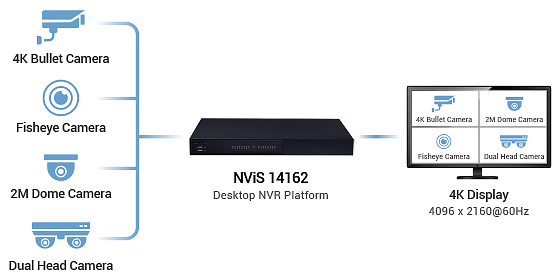
The Solution
Facing the challenges of complex systems with multiple 2M camera and 1080p resolution and high definition quality output, Nexcom is proud to present a suitable solution with the NViS 14162 NVR. The system is equipped with an integrated Intel J6426 Quad Core 2.0 GHz CPU, which has the latest and up-to-date 11th generation LP-GT graphics with an efficient 10 nm lithography. The processor supports advanced image processing technologies and delivers outstanding performance on a display with up to 4K resolution in 4096 x 2160 pixels at 60 Hz. The same technology is also used in the more powerful range of 10th generation Intel Core i3/i5/i7 processors "Ice Lake". For this reason, the graphics performance for 2D/3D rendering of the Elkhart series is only slightly below that of 6th generation Intel Core processors Skylake, such as the Intel Core i3-6100. A comparison between the two systems can be found in Table I.
In terms of above-average video decoding capabilities, the NViS 14162 is only one channel below that of an Intel Core i3-6100 at 1080p M2 with 30 FPS. The results of the Intel Pentium J6426 and Intel Core i3-6100 in real-time rendering are shown in Table II. The extended overall performance shows that the Intel Pentium J6426 works significantly more efficiently with a consumption of only 0.625 watts per channel than the Intel Core i3 6100, which spends about 3 watts for each channel. A comparative overview of the energy consumption of the Intel Pentium J6426 and Core i3 6100 is shown in Table III.
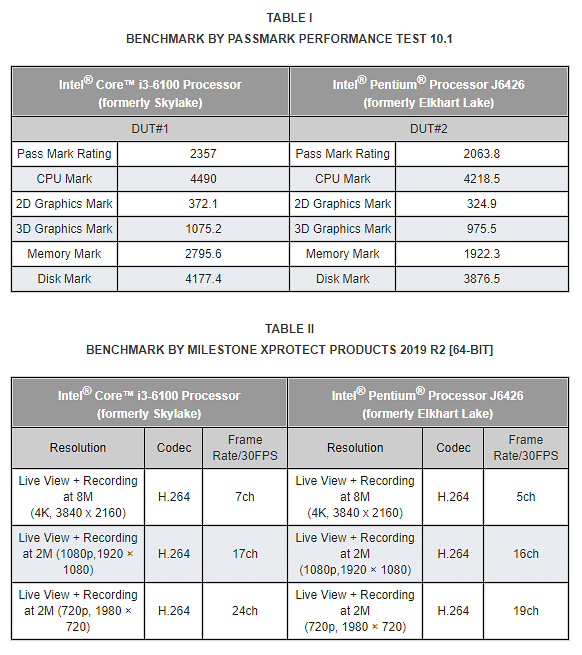
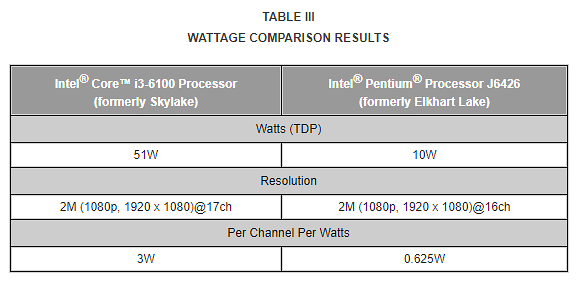
Result and conclusion
The Intel Pentium SoC of the offer outstanding performance with low power consumption and represent a key technology to meet the high current demands on desktop NVR systems As many NVR solutions require 24/7/365 uninterrupted operation, power consumption is one of the most important factors in the deployment of effective video surveillance. In addition, sustainability in terms of ESG (Environmental Social Governance) is increasingly being discussed and more and more companies are recognizing its importance and aligning their technology accordingly. A concrete calculation shows that by using the NViS 14162, an impressive total of 14,000 kW per day can be saved with a saving of 40 watts per unit and sales of 350,000 units per year. The NViS 14162, with more performance at a significantly lower power consumption, achieves maximum efficiency and value in its generation, proving to be a breakthrough in user experience and a milestone that redefines the requirements for modern NVR systems.
